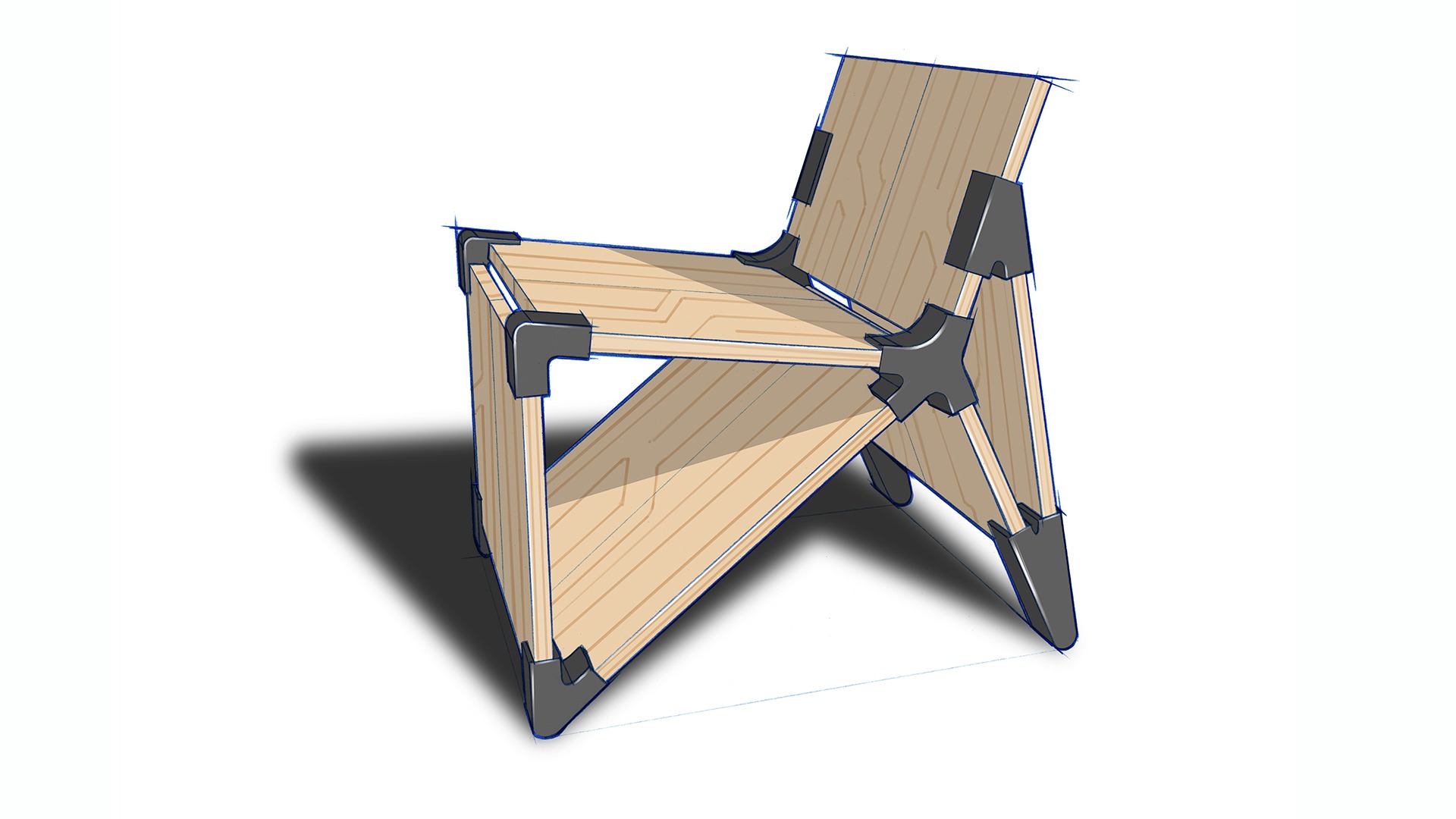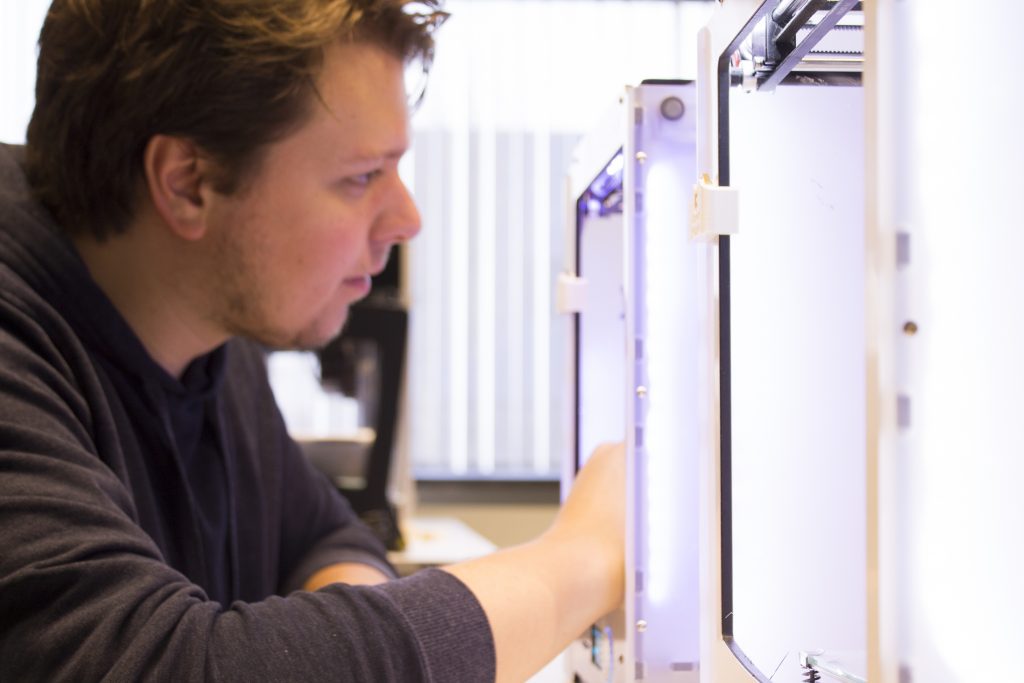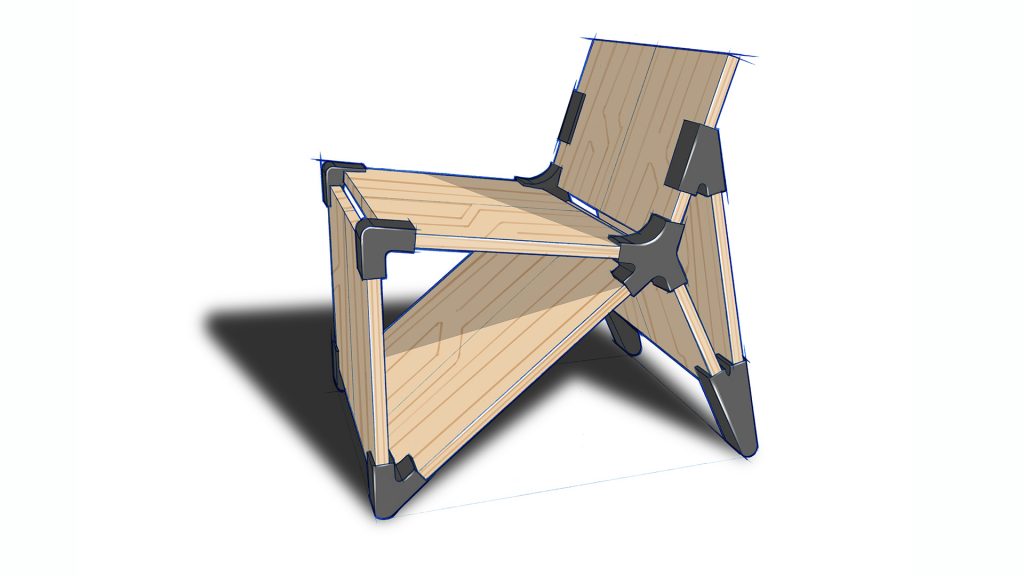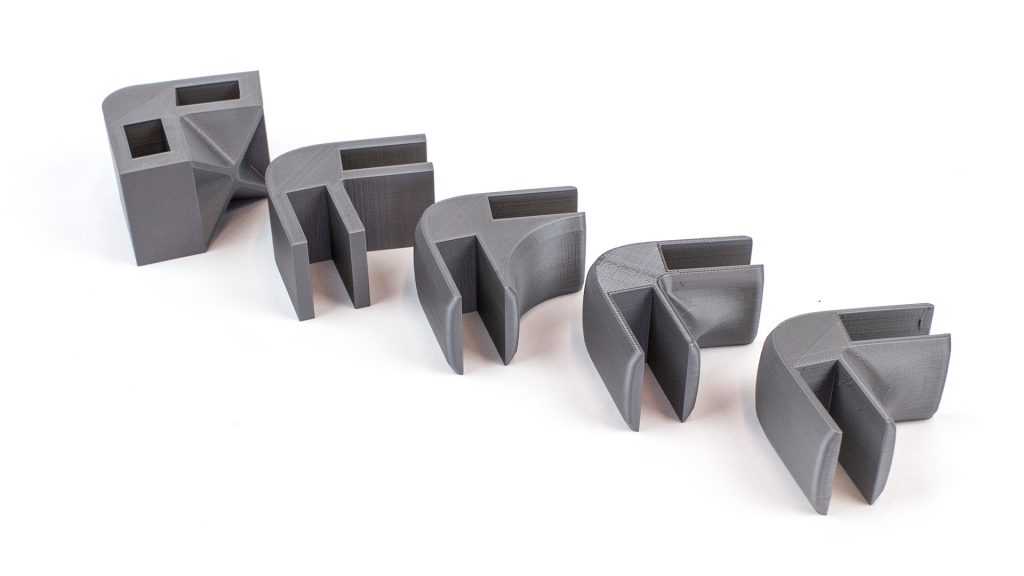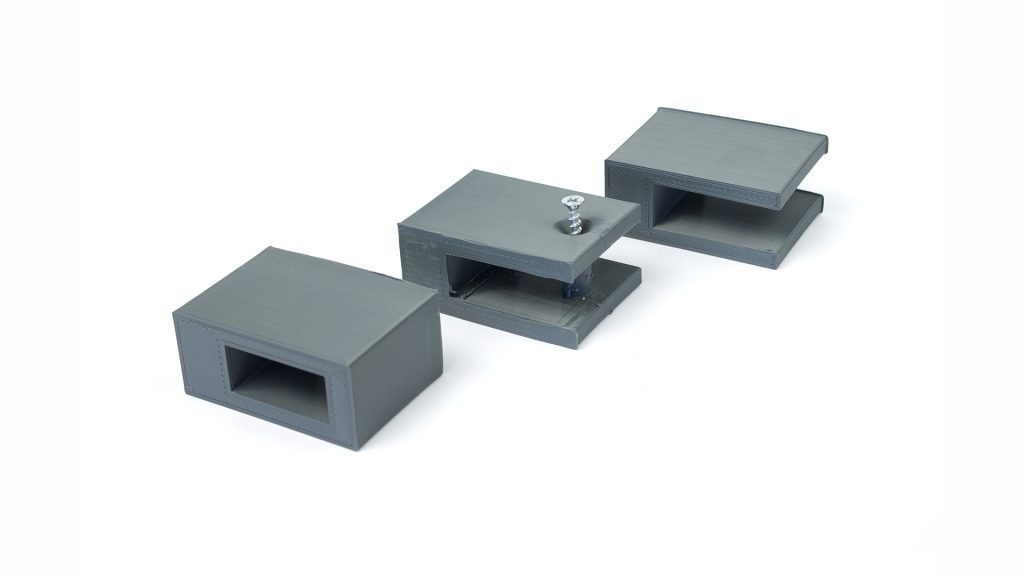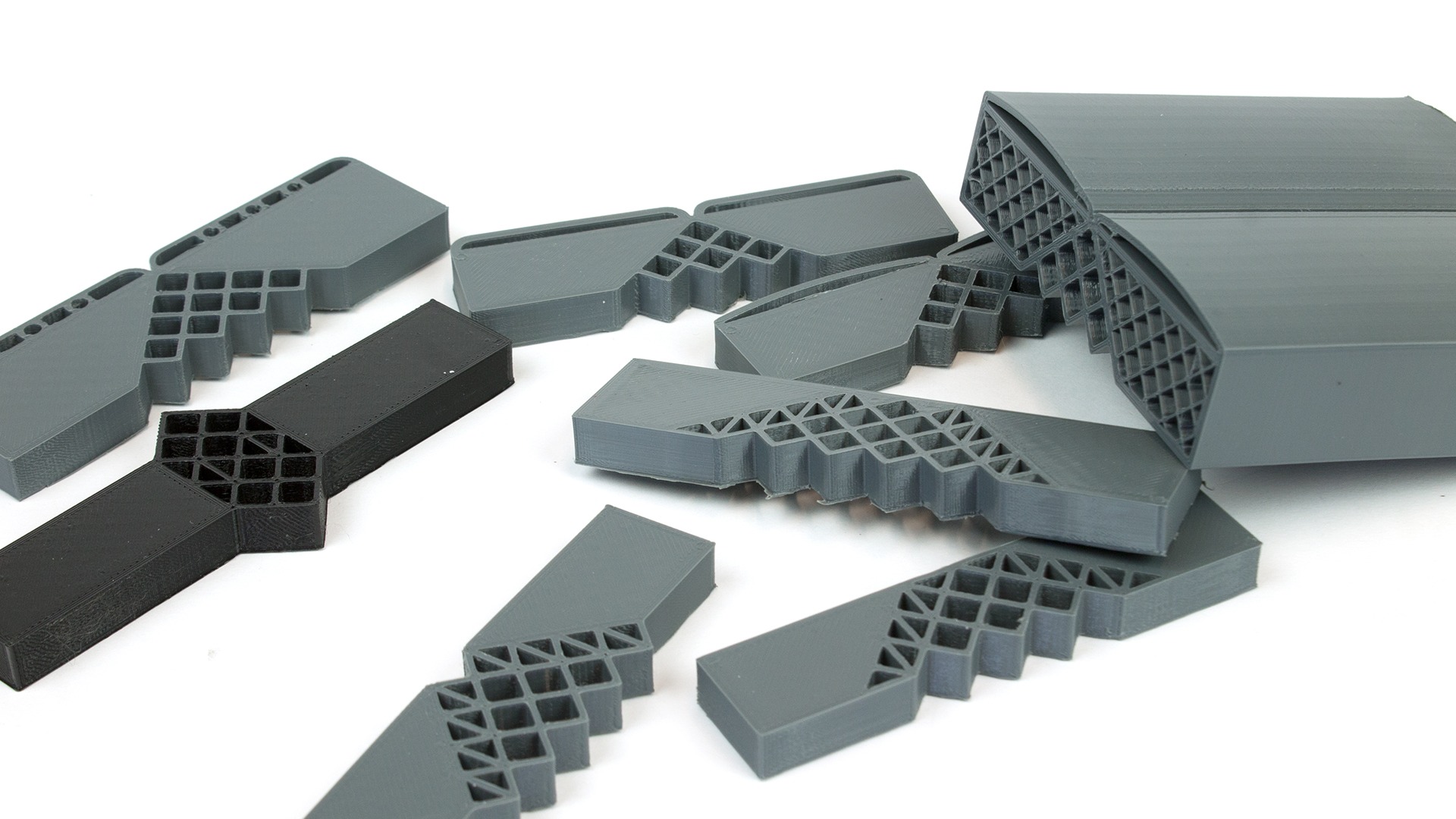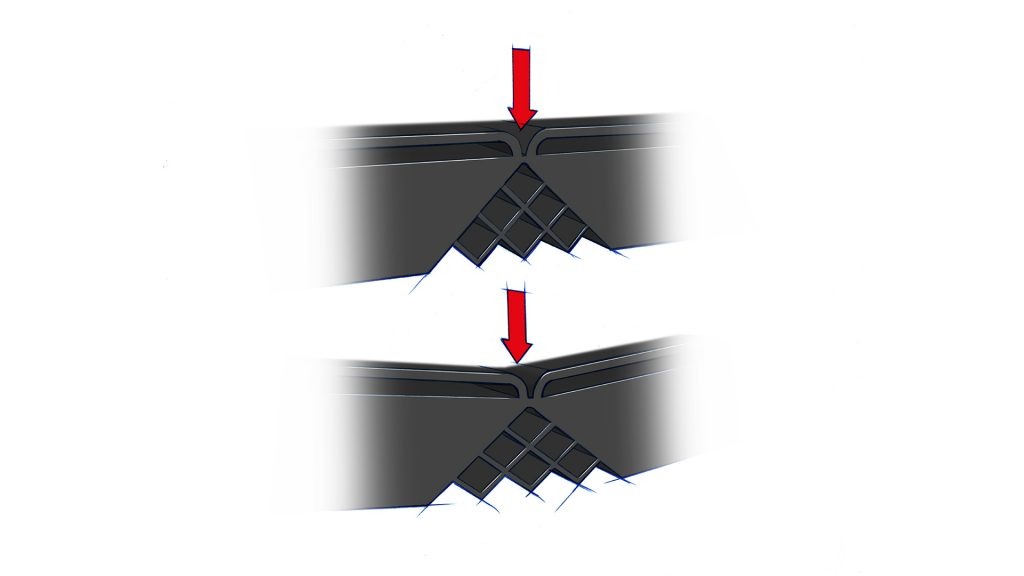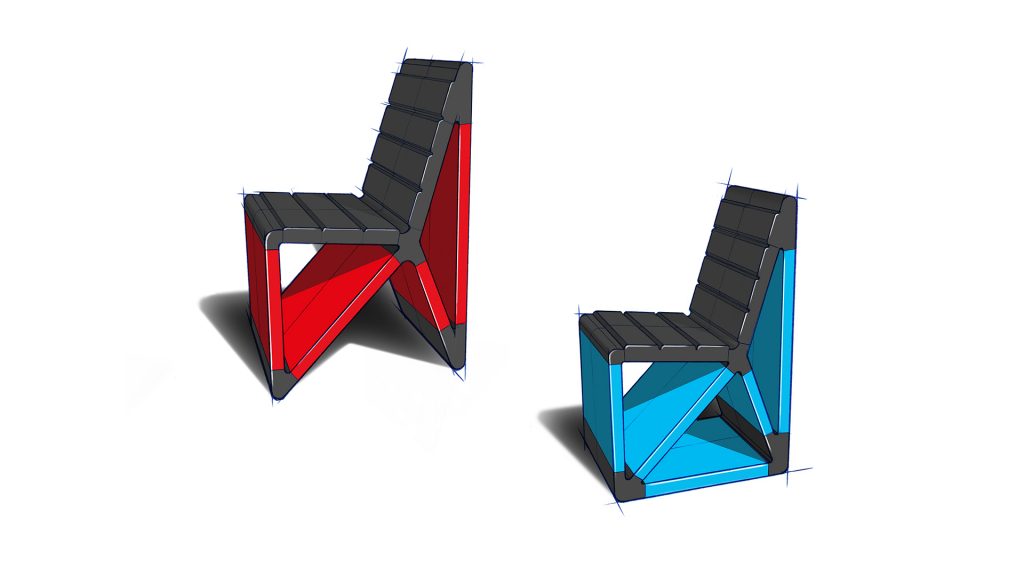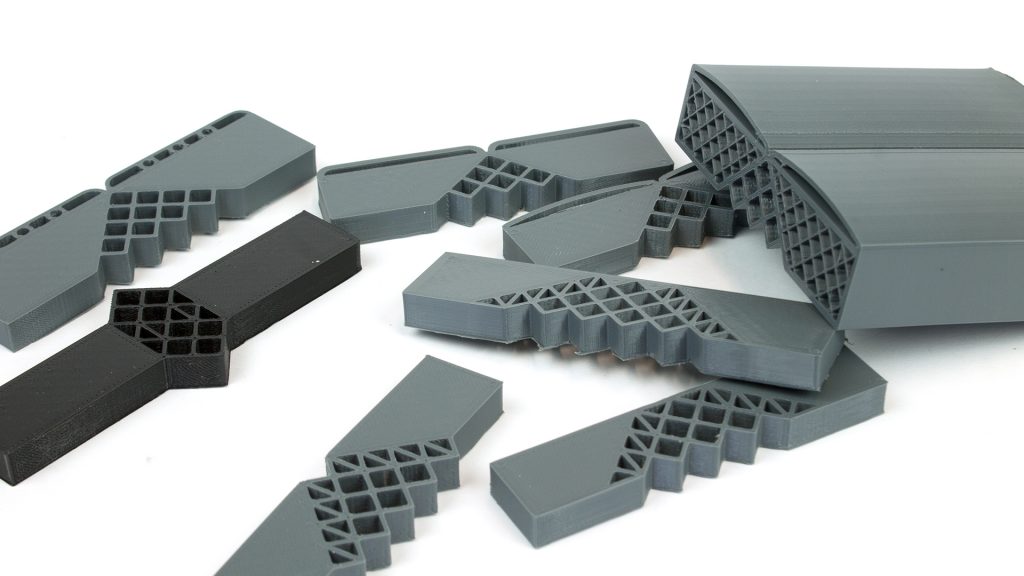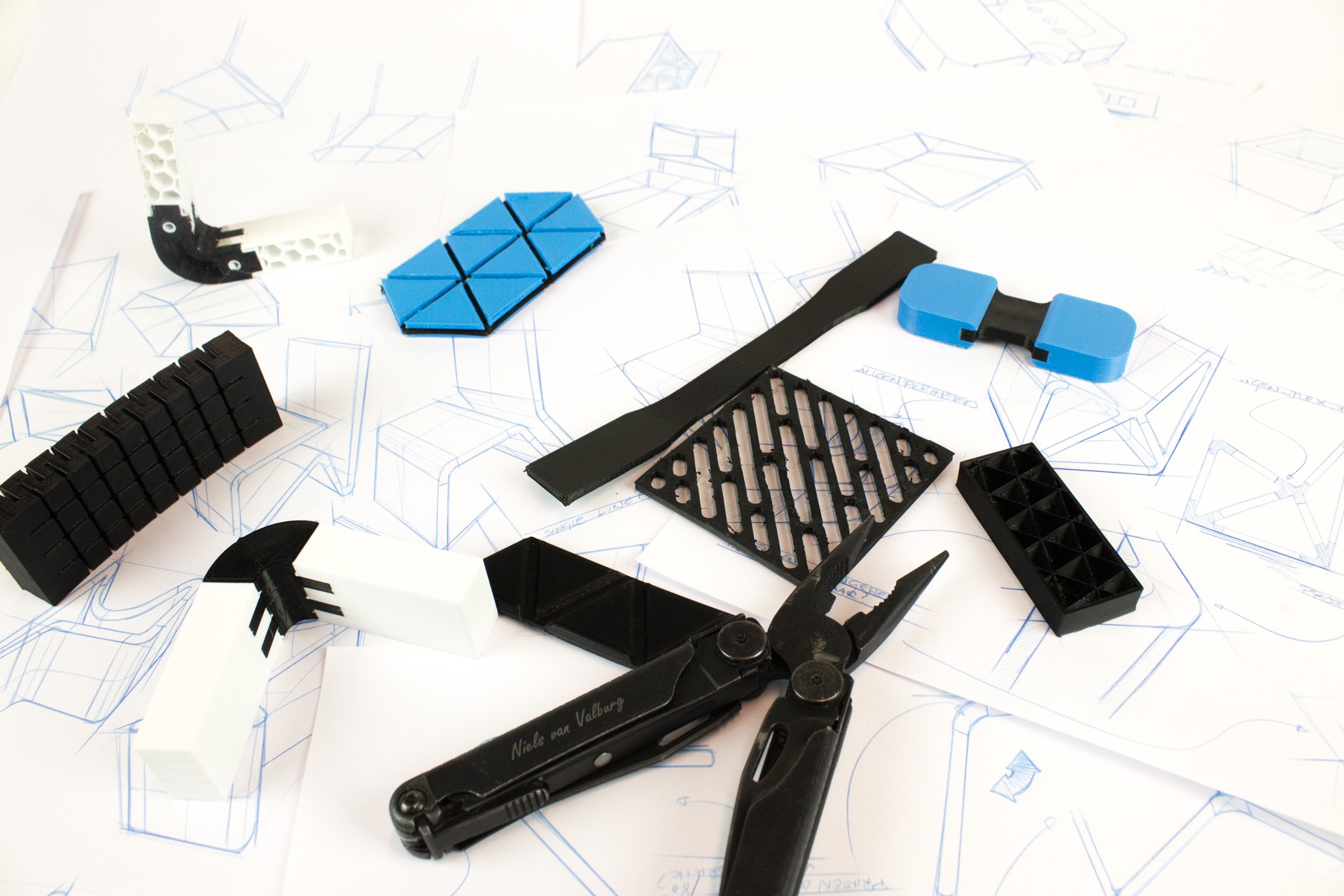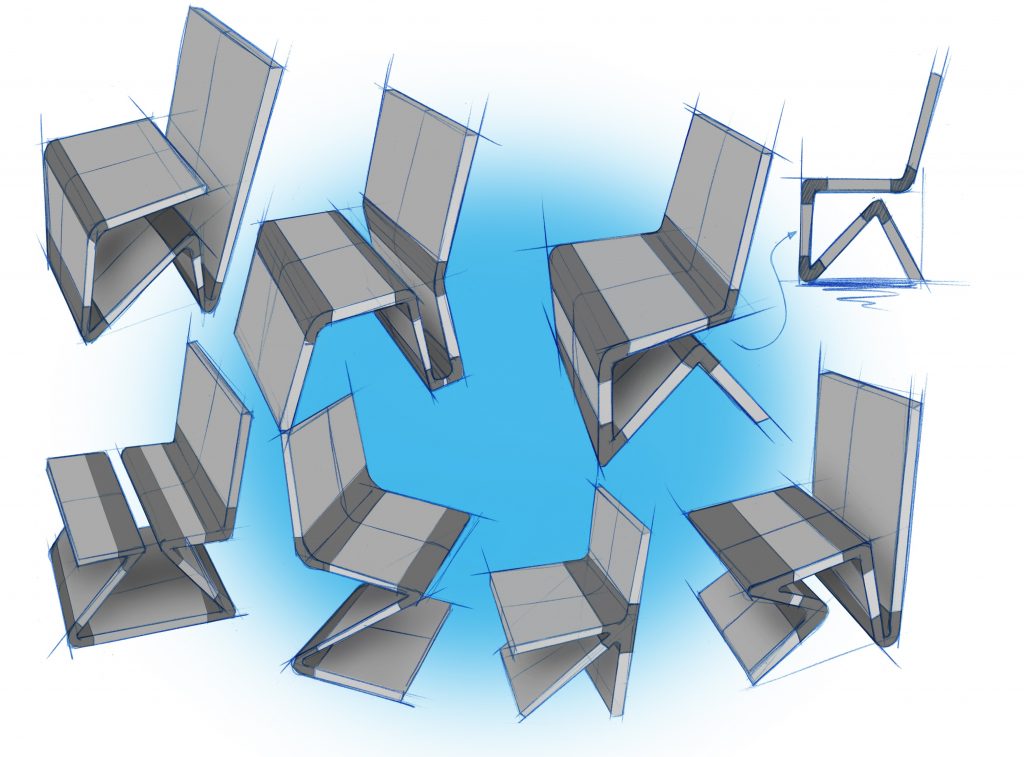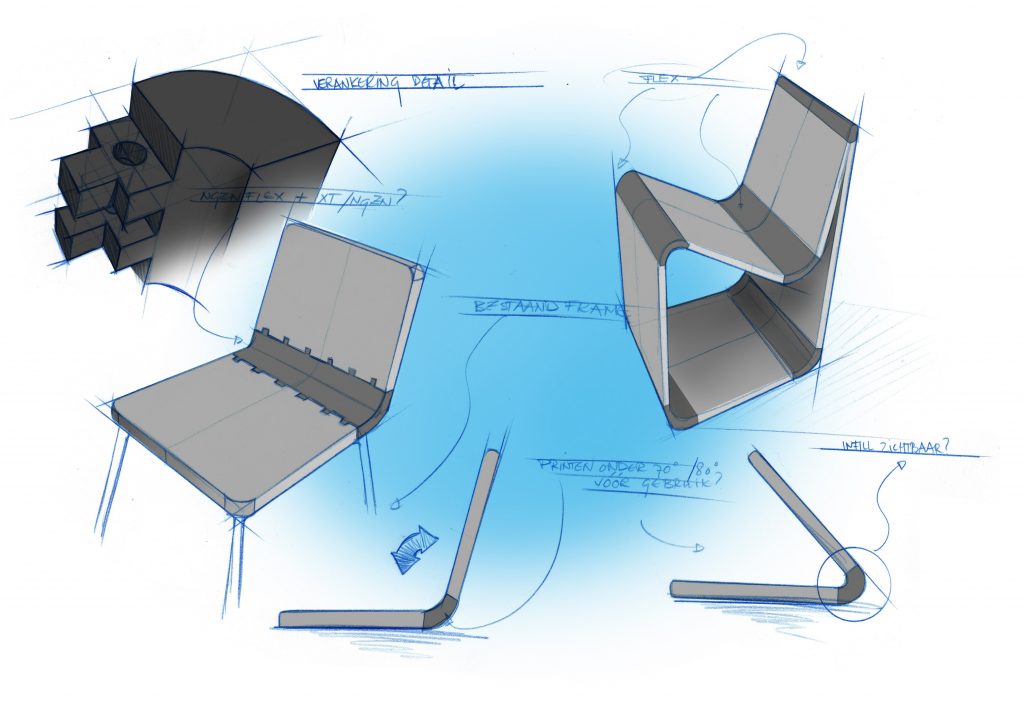This spring, Niels van Valburg is our intern here at colorFabb. He is currently working on a design for a 3D printed chair. You can read his previous updates here and here. Below is his third update and progress so far...
Hey there!
It has been a while since my last post, and a lot of work has been done since then. At the time of my previous update I was approaching my midterm presentation, during which I received a lot of feedback to continue my project with.
And that feedback has shifted the focus of the entire design so far. My previous chair was meant to be printed as several big parts that would be connected. And after presenting this the question came up on how much material that would actually cost, and if the chair is meant to be built by other people as well. Which lead to changing the design towards efficient material use, easy printing on desktop machines and also easy assembling. By doing that it becomes possible for people to use their machines to make a simple chair, and see how much is possible with a 3D printer and some filament.
The new design is a chair that consists of 3D printed connectors combined with plywood panels. The sketch on the picture shows a basic impression of how it will look. And one of the cool things about it is that it uses the properties of nGen_FLEX to make the connection to the plywood!
On the pictures you can see several printed tests to see which connection to the wood will be the best. I have also designed several different shapes for the connectors themselves and printed these in PLA Economy to see how printable they were, and how the form itself looks in real life instead of my screen.
And now it is time to start with the printing and assembling process of the entire chair, which will take me about two weeks if everything is going as planned.
So untill next time!
Niels
To be continued…
More on the materials
nGen_FLEX was released in September 2016 at the TCT Show and is our first semi-flexible material. With a Shore A hardness of 95 it is a material that is ideally suited for functional parts. It is not soft and squishy like other flexible materials in the market, but allows for fast printing and printing on 3D printers using a Bowden tube. nGen_FLEX is a material for users looking for an engineering grade flexible filament with a high temperature resistance (over 120 degrees C) and good chemical resistance.
You can read the initial reception of nGen_FLEX here.
nGen_FLEX is made with Eastman Amphora™ 3D polymers, a range of co-polyesters developed with Eastman Chemical Company for 3D printing. Amphora co-polyesters are low-odor, styrene-free choices that are uniquely suited for 3D printing applications. With Amphora, items can be created that are more functional, more durable, more efficient and attractive. You can find more information about co-polyesters in the article we published last summer: What we talk about when we talk about co-polyesters.
We launched PLA Economy in November last year and has been a best seller ever since. We offer 2.2kg filament on a big spool for a little over € 35 (excluding VAT and shipping) at the best colorFabb quality you are used to. We have extensively tested this PLA grade in our print lab. Since this week we offer a fifth color to our portfolio: Dark Blue, which ships now from stock.
Visit our webshop now.
